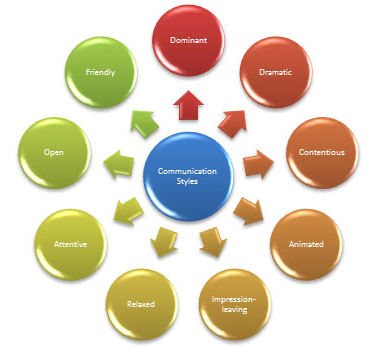What Communication Style do you Favour?
The Communication Style of a coach is one of the most influential attributes a coach has on their players. Communication is the lifeblood of coaching. Communication is how a coach teaches and instructs the players under their direction. It provides the vehicle for the message to be delivered, and the better the communication is between the coach and their players, the better the end results are. With this said though, there are a number of different ways to make a pie and there are certainly a number of different ways in which a message can be communicated with the desired effect. Not all coaches need to be the same; there is no one particular style of coaching or communicating which is perfect. It is always a work in progress.
What is helpful for a coach however is to understand their communication style so they can look towards ways in which they can reduce the negative effects of this style. The strategies to manage a communication style might be having other coaches (such as assistants) who have an alternative style or are particularly strong in other areas so coaches can work together to provide the greatest coverage of meaningful communication to the players under their direction.
Robert Norton’s Communication Styles (1983) help to set out a range of different groups for communication characteristics. These are described below:
Dominant: this communication style often tries to railroad the discussion. This communication can be characterised by loud voice patterns, interruptive responses, and excessively long eye contact. If facing this communication it can feel as though the other person in the discussion is jumping on what you are saying before it is said
Dramatic: communication style is characterised by overstatement and exaggeration. This type of communicator like to be placed at centre stage and be the star of the discussion. This provides the impression for the other person in the discussing feeling like it can be a battle of who has the best story
Contentious: this communication style will be seen to be argumentative and provoke the undisciplined listener into an emotive response. For individuals facing this type of communication style the key is to remain calm and be focused on raising new discussion points needing to be made, not defending your position only
Animated: the style of communicator is very expressive with their body language. The emotion of what they are saying can be seen as well as heard
Impression-leaving: This communication style leaves listeners or other participants in the discussion with a memorable point, phrase or teaching point. This is a very powerful style of communication and often one that coaches possess, as they refine their philosophy over time and develop a rhythm and wording to their teaching that can be impressive

Relaxed: This communicator will appear controlled and deliberate with their communication. Often taking time to pause before response and very purposeful with the choice what is communicated.
Attentive: This communication style can be identified in people who display genuine listening ability and empathy. A common trait is that these communicators of reinforce what the other person or people involved in the discussion have stated prior to making their response.
Open: Communicators who possess this style seem to be able to pass judgement about himself or herself without concern or reserve. Able to talk about challenging topics in an un-emotive or rash perspective.
Friendly: This communication style is often characterised by a highly engaging discussion with the communicator able to scaffold discussion to draw more and more information from the other participant in the discussion.
It is important to note that when examining the communication style of a coach it is worth noting that while players will have individual preferences. Also too will some situations lend themselves better to certain styles of communication in light of others. As with Leadership, Communication can be affected by the situation and environment as much as any activity. What is important to remember is that effective and efficient communication comes from each player receives the desired message. So a coach must be familiar with how different communication styles can be effective in different situations. As a coach, it is worth thinking about these communication styles and what situations would be best to communicate in this fashion.
Reference
Norton, R. (1983). Communication Style: Theory Applications and Measures. Beverly Hills: Sage




